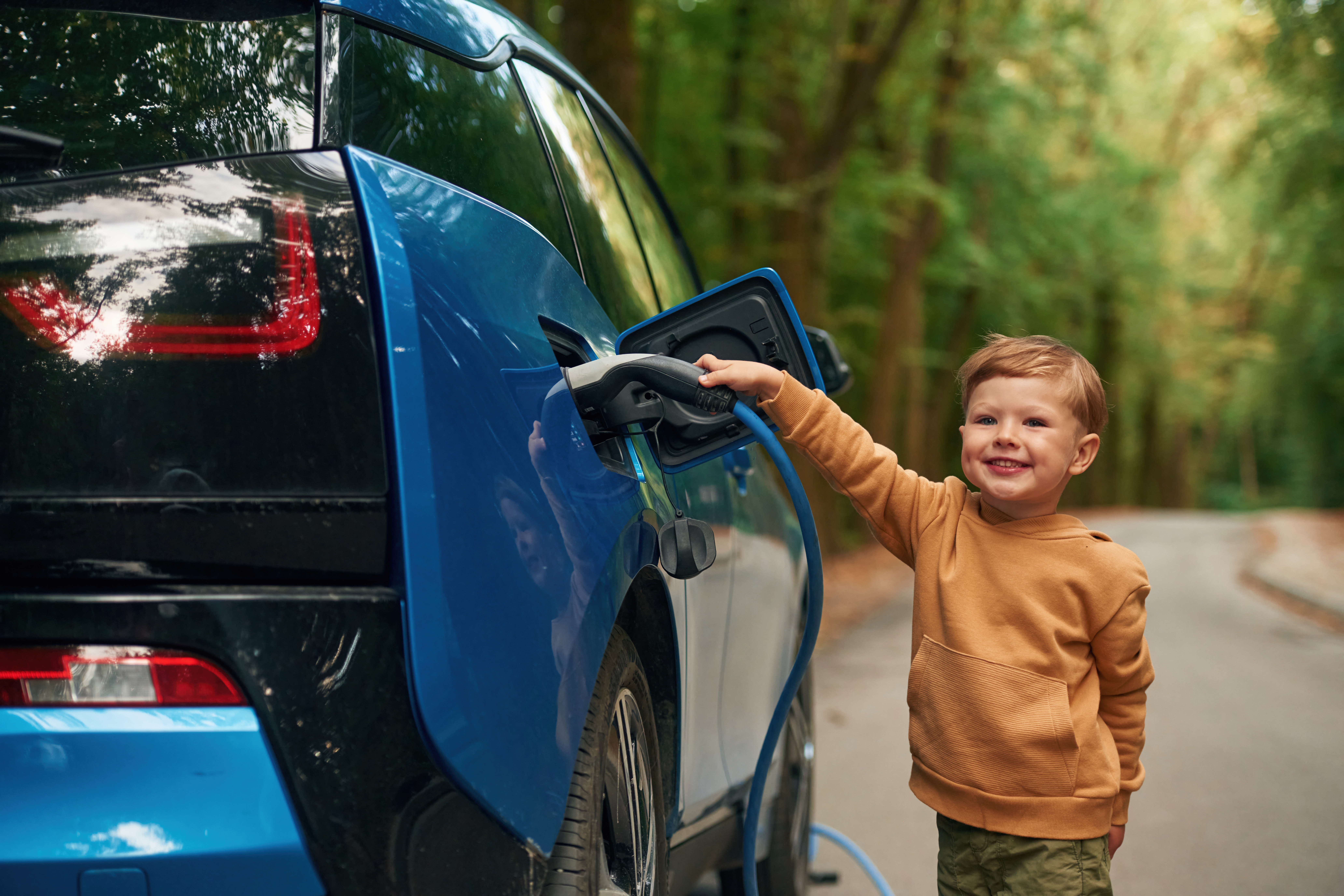
5 minute read
ELECTRIC VEHICLES
By Josh Filler, Vice President & Chief Operating Officer - Electric Operations
As our energy landscape evolves, electric vehicles (EVs) are becoming increasingly common on our roads. This transition represents one of the most significant shifts in transportation and energy use in decades. We want our members to have accurate and balanced information about EVs—their benefits, challenges and how they might affect your energy use and monthly electric bill.
Types Of Electric Vehicles
Battery Electric Vehicles (BEVs): Fully electric vehicles with no gasoline engine that are powered solely by electricity.
Plug-in Hybrid Electric Vehicles (PHEVs): Combine a gasoline engine with an electric motor and battery. This allows them to run on either electricity or gasoline.
Hybrid Electric Vehicles (HEVs): Use a gasoline engine as the primary power source but supplement with electric power. They cannot be plugged in and recharged.
Benefits Of Evs
Environmental: EVs have reduced emissions, make less noise, and can reduce your carbon footprint when paired with renewable generation. Even considering the higher upfront carbon emissions required to manufacture an EV and the recycling/decommissioning at the end of its useful life, they are still generally lower than the exact lifespan of an internal combustion engine vehicle (ICEV).
Financial: It costs less to operate an EV compared to an ICEV. Electricity is cheaper than gasoline on a permile basis. For example, take an ICEV that gets 25 mpg with fuel prices at $3.00 per gallon, which is effectively $0.12 per mile. Now, let's compare that to an electric vehicle with a 100-kWh battery and a range of 300 miles, equating to 3 miles per kWh. When looking at our average cost per kWh over the last few months of $0.145 per kWh, that would equal $0.049 per mile, which is about 60% cheaper than an ICEV. The range can drop dramatically during the colder months, but let’s say it drops in half. The effective cost per mile would still be $0.098 per mile and about 20% less than an ICEV.
Another financial benefit is the reduced cost of maintenance. An EV does not require oil changes, and regenerative braking reduces wear on brakes.
Performance: EVs have instant torque with an electric motor. Since the electric drive motors do not have to shift and the weight of the car is increased, you get a smoother ride.
Challenges Of EVs
Range and Charging: Although EV ranges have improved significantly (many models now offer 250+ miles per charge), concerns about running out of power (range anxiety) remain a psychological barrier for some potential buyers. The charging network is not yet as ubiquitous as gas stations, which makes longer trips more challenging and may require more planning. Recharging takes longer than filling up your gas tank, even with fast chargers.
Upfront Cost: An EV can cost you more at the dealership than a conventional ICEV, especially with the added cost of installing a charger at home. The batteries typically have an 8-10-year warranty, but the eventual replacement of the batteries can be expensive. Other potential challenges include living in an apartment or condominium where home charging may not be feasible and make daily driving less convenient. EVs also bring added demand to our electric system, requiring electric infrastructure upgrades over time with more widespread adoption.
Charging
Home charging can take two forms: Level 1 and Level 2. Level 1 charges from a standard 120V outlet and provides about 3-4 miles of range per hour. Level 2 charges on a 240V which could be through a hard-wired charger or one plugged into a 40A or 50A NEMA receptacle. These chargers can provide anywhere from 15-40 miles of range per hour.
There are some best practices to consider when charging. To lessen the impact on the power grid, try to charge during off-peak hours (10 p.m. to 6 a.m.). This not only helps alleviate congestion on the grid but also keeps the overall cost of generation down. Avoid frequent fast charging to reduce battery degradation. The slower charging time of a level 2 home charger is more gentle on the battery and helps extend the life of the battery. Try to avoid the extreme levels of the battery. Maintain the battery between 20% and 80% is best to optimize its health and longevity.
If you are considering purchasing or have purchased an electric vehicle, please let us know so we can better serve you. As more of our members buy electric vehicles, it is helpful for us to understand where they are located to ensure we have the necessary infrastructure to meet charging needs and provide reliable power to our local homes and businesses. The Energy Cooperative offers an electric vehicle charger rebate for electric members. The rebate covers $250 for Level 2 chargers. Tax credits, rebates and other incentives are available for electric vehicle purchases. Visit www.afdc.energy.gov/laws/electric-vehiclesfor-taxf-credit to learn more about federal incentives available through the Clean Vehicle Credit program.
The Energy Cooperative is here as a resource if you have any questions. Give us a call at 740-344-2102 or visit our website at www.myenergycoop.com/contact-us.








